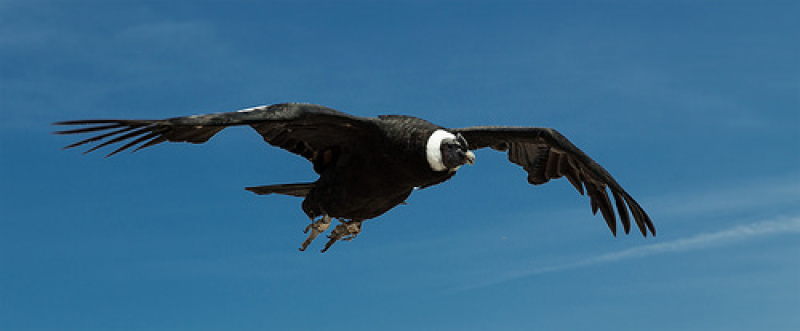
Wildlife biologists believe the surprise birth of a baby California condor is a positive indicator regarding the survival of the endangered species, Discovery News reported.
The young predatory bird was discovered in late December to the surprise of members of the Ventana Wildlife Society, an organization that oversees the conservation of condors in the wild.
According to the group, one of their biologists saw the baby bird with two adult condors in California's wildlife sanctuary Big Sur. At that time, the hatchling was already nine months old. The group assumed that the two adult condors are its parents.
"This pair of condors is suspected of nesting in a remote portion of the Ventana Wilderness in the Arroyo Seco drainage," the group said in a statement according to CS Monitor. "Biologists have never entered the nest because of the area's inaccessibility."
For the biologists, the arrival of the young condor indicates that the birds in the wild are breeding successfully. The father, a condor named Shadow, had previously mated with other birds and produced two other chicks before the birth of the latest hatchling.
"As biologists, we strive to know everything about the flock, but when we get a curve ball like this it's a real pleasant surprise," Joe Burnett, the coordinator of Ventana Wildlife Society's Big Sur condor project told the San Francisco Chronicle.
"It's just a sign of how well the flock is doing - that they are flying out on their own, making nests and breeding on their own," he added.
Currently, there are only 425 condors living in the wild and in captivity. 116 of them can be seen in California. Various factors such as construction works on natural habitats, poisoning and illegal hunting almost led to the extinction of the species in 1987.
At that time, only 27 remained. These birds were then captured and transferred to conservation facilities where they were cared for.
Burnett noted that although condors are still listed as endangered, their breeding habits show that the species is capable of surviving on its own in the wild.
"It's just confirmation that this species can make it, that the habitat is still there, that there still is room for condors in the ecosystem and in the landscape that we share with them," he told the San Francisco Chronicle.



















